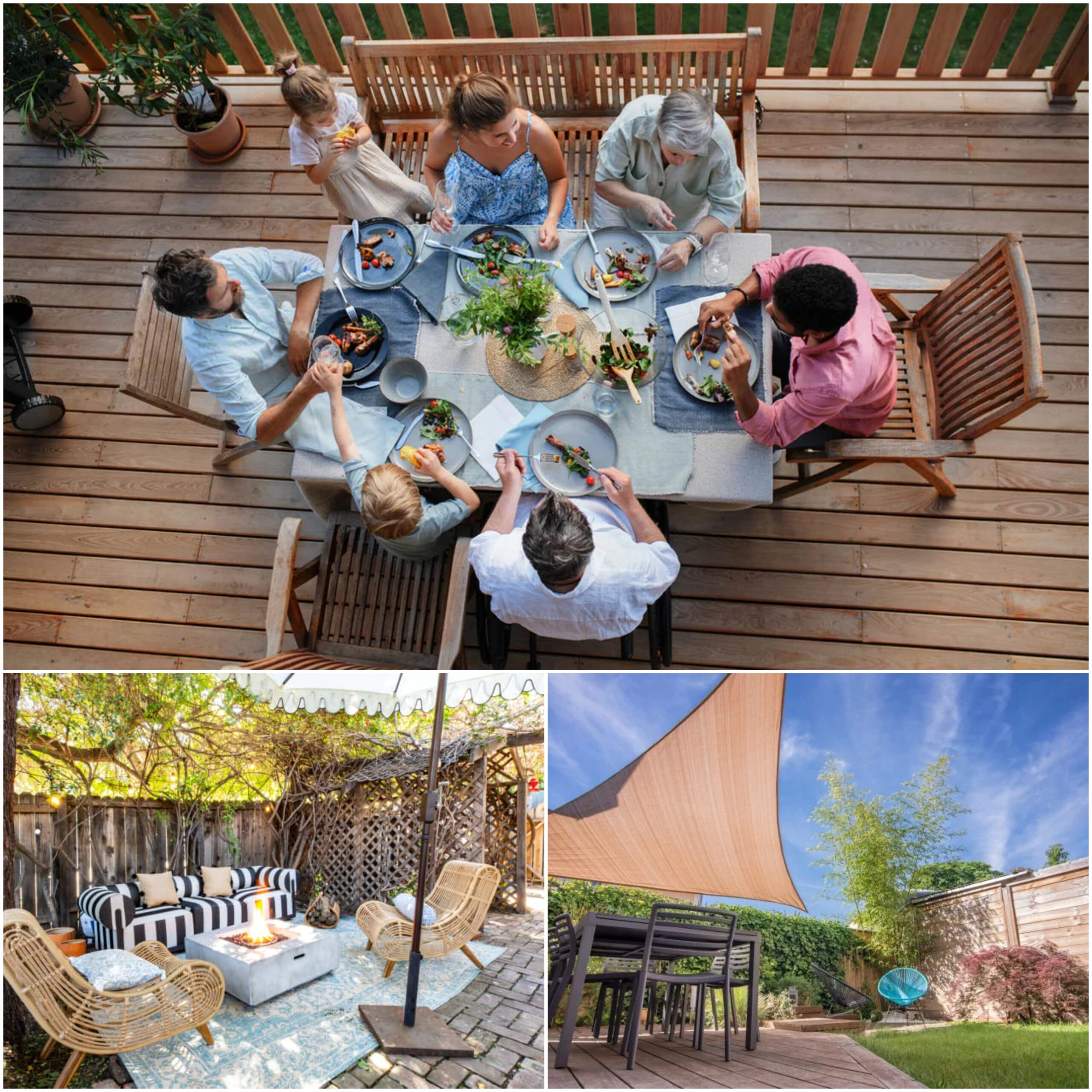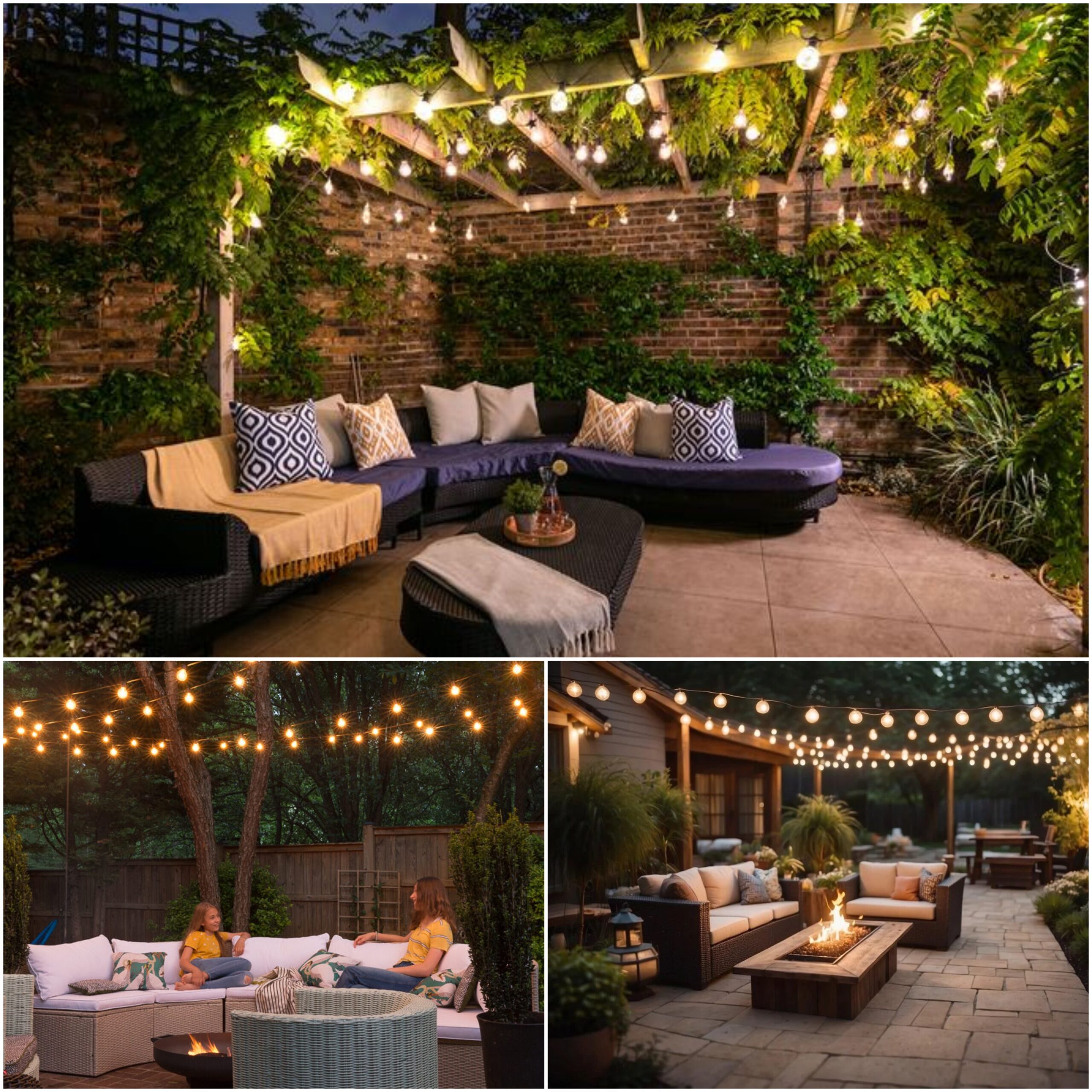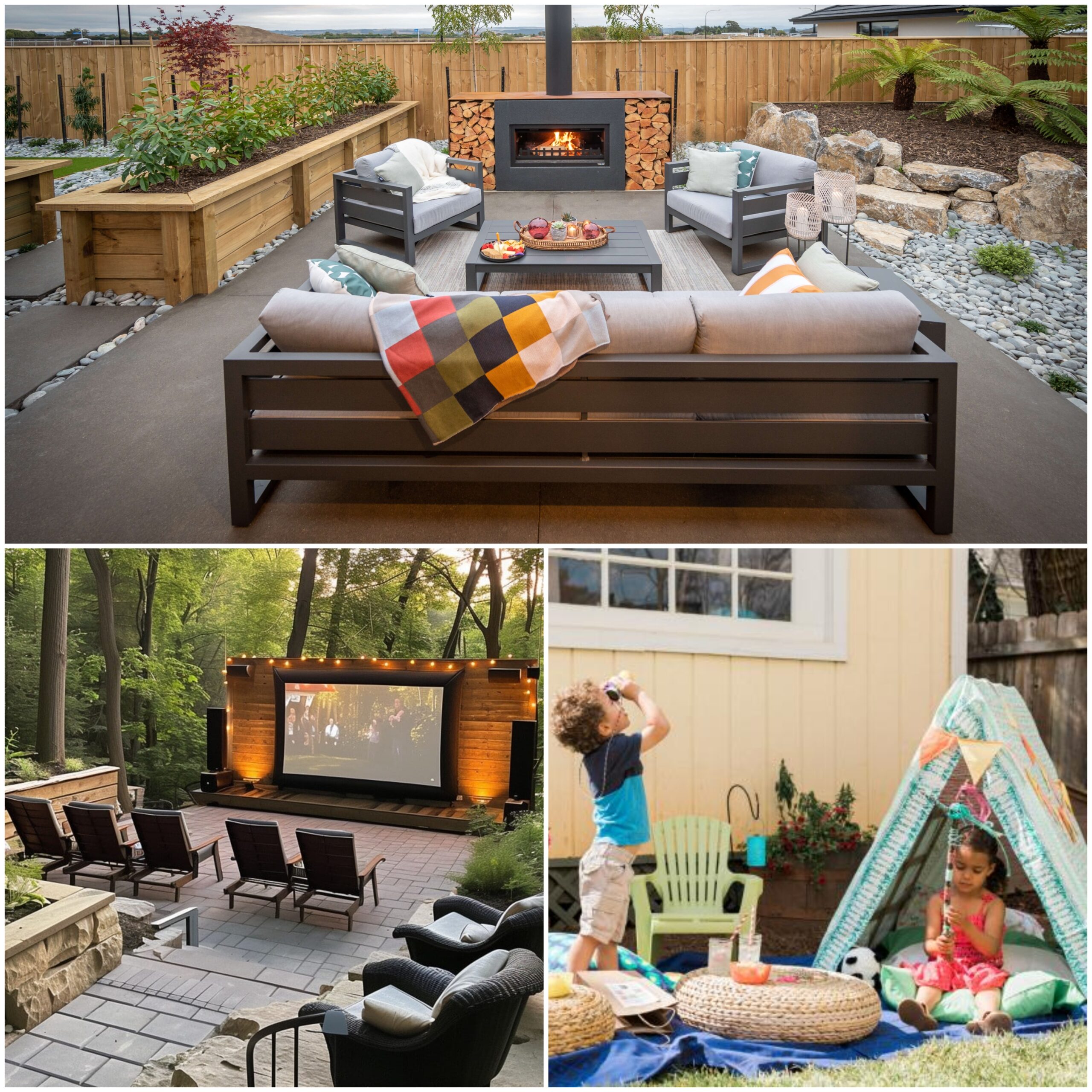Table of Contents
American homes today would not be complete without seasonal maintenance for outdoor living areas, which provide areas for entertainment, leisure, and getting back to nature.
These outdoor areas, which range from cozy balconies to expansive backyard patios, provide a haven from the daily grind.
Yet, seasonal maintenance must be done to guarantee that these spaces continue to be useful and enjoyable.
Seasonal Maintenance Guide
As an extension of indoor areas, outdoor living areas offer chances for recreation, social interactions, and personal rest.
Having a dedicated outdoor area allows people and families to relax, refresh, and restore a connection with the natural world in the hectic pace of modern life.
These outdoor retreats offer countless benefits for both physical and mental well-being, whether you choose to host a barbecue with friends or just have a peaceful cup of coffee in the morning.
- Purpose of Seasonal Maintenance
As beneficial as outdoor living spaces can be, they are also vulnerable to weather, natural elements, and wear and tear.
These areas may gradually lose their aesthetic appeal and functionality if they are not properly maintained.
For outdoor living spaces to stay safe, appealing, and fun all year round, seasonal maintenance is essential to maintaining their integrity.
Homeowners can safeguard their investment and extend the life of their outdoor spaces by sticking to a seasonal maintenance schedule.
Spring Maintenance
Time to invest some much-needed attention in your outdoor living space as the weather warms and the natural world comes alive.
A lively and welcoming outdoor area is created in the spring and maintained throughout the rest of the year.
1. Clean up Debris and Leaves
- The first spring seasonal maintenance task is to remove any dirt and leaves that build up over the winter.
- Clear any garbage or fallen branches, rake the grass, and sweep the patio.
- This not only makes your outdoor space look better, but it also keeps possible hazards away and promotes healthy growth.
2. Inspect and Repair Outdoor Furniture
- Look at your outdoor furniture for indications of wear or winter-related damage.
- Tighten bolts, tighten any loose screws, and replace any worn-out fabric or cushions.
- Making sure yourseasonal maintenance furniture is ready for use in the upcoming warmer months requires a thorough inspection and tune-up.
3. Check and Clean Outdoor Lighting Fixtures
- Check for any damage or issues with the outdoor lighting fixtures you own.
- Make sure all fixtures are firmly mounted, clean any dirty lenses, and replace any burned-out light bulbs.
- In addition to improving safety during nighttime events proper lighting also adds to the ambiance of your outdoor area.
4. Prep Soil and Plant New Flowers or Plants
- Loosen the soil in your garden beds and remove any fallen plants or weeds.
- To prevent weed growth and preserve moisture, think about adding new mulching material.
- Also, spring is the ideal time to plant new vegetables, flowers, or shrubs to liven up your outdoor haven and add color.
5. Check the Irrigation System and Adjust the Settings
- After the winter, check your irrigation system to make sure it is operating properly.
- Look at the sprinkler heads for damage, clogged nozzles, and leaks.
Read: Quick Fixes for Instant Home Improvement – Small Changes, Big Impact

Summer Maintenance
Summer seasonal maintenance keeps your outdoor living area in top condition for enjoyment and relaxation as the temperature rises and outdoor activities increase.
1. Regularly Water Plants and Lawn
- It is critical to make sure your lawn and plants get enough water during the summer’s hotter and drier weather.
- Create a watering schedule that takes into consideration the requirements of your plants.
- To save water and get it straight to the roots, think about utilizing soaker hoses or drip irrigation.
2. Monitor and Treat for Pests and Insects
- For seasonal maintenance, insects and pests love the summer because it is the ideal season for them to flourish outside.
- Look out for symptoms of infestation, like unusual plant discoloration or chewed leaves.
- Use pest control techniques, like targeted treatments or natural repellents, to safeguard your plants and maintain the quality of your outdoor area.
3. Clean Outdoor Surfaces (Patio, Deck, etc.)
- To get rid of dirt, grime, and debris, clean outdoor surfaces like patios, decks, and walkways regularly.
- To remove stains and restore the look of these surfaces, use a pressure washer or a mild detergent solution.
- Cleaning improves the appearance of your outdoor area while also reducing the risk of trips and falls.
4. Inspect and Maintain Outdoor Cooking Equipment (Grill, Smoker, etc.)
- During the summer, when outdoor entertaining is at its peak, it is critical to check and maintain your outdoor cooking appliances.
- Check charcoal supplies or propane levels, clean the grill grates, and make sure all the parts are in good operating order.
- Maintaining your outdoor cooking experience on a regular basis keeps it safe and enjoyable.
5. Check and Repair Any Damage Caused by Summer Storms
- Strong winds, a lot of rain, and even hail can be brought by summer storms, and these weather conditions could harm outdoor furniture, structures, and landscaping.
- Check your outdoor living space for damage after a storm has passed, looking for things like displaced items, torn fabric, and broken branches.
- As soon as something breaks, replace it or make repairs to stop further damage and preserve the integrity of your outdoor area.

Fall Maintenance
As summer gives way to fall, you need to get your outdoor living space ready for the dropping temps and shifting weather that lie ahead.
The goal of fall seasonal maintenance is to keep your outdoor space safe and functional throughout the fall by organizing and making the necessary modifications.
1. Rake and Dispose of Leaves
- Fall arrives with a full of vibrant foliage, but it also brings with it an increase in leaves that fall.
- To keep leaves from smothering your lawn, clogging drainage systems, or creating a slipping hazard on patios and walkways, rake and dispose of them regularly.
2. Clean Gutters and Downspouts
- Fall is a great time to clean out gutters and downspouts to get rid of dirt, twigs, and other accumulated debris.
- Make sure your gutters are free of materials to allow for suitable drainage during fall rains.
- Clogged gutters can cause water damage to your home’s foundation and exterior.
3. Inspect and Service Outdoor Heating Elements (Fire Pit, Outdoor Heater, etc.)
- Outdoor heating components are necessary for keeping your outdoor living space usable well into the fall when the weather cools off.
- Make sure your outdoor heater, fire pit, and other heating devices are safe and operational by giving them regular inspections and seasonal maintenance.
- Clear out the ashes, inspect the gas lines, and replace any worn-out parts.
4. Store Outdoor Furniture and Cushions Properly for Winter
- Store outdoor furniture and cushions correctly to prevent damage and extend their life before the severe winter weather arrives.
- Cushions should be completely cleaned and dried before being stored in a dry, well-ventilated area.
- To protect it from the weather, cover or store outdoor furniture in a garage, shed, or other designated storage area.
5. Trim Trees and Bushes
- Use the fall season months to cut down the bushes and trees in your backyard.
- For more healthy growth and to preserve the form and structure of your landscaping, trim any dead or overgrown branches.
- In addition to reducing the risk of potential hazards like falling branches during winter storms, shaping trees and bushes also helps.
Read: Eco-Friendly Outdoor Living – Sustainable Practices for Your Yard

Winter Maintenance
It is necessary to take precautions to shield your outdoor living area from severe weather when winter arrives and the temperature drops.
The main goals of winter seasonal maintenance are to protect external surfaces and get ready for the eventual return of spring.
1. Protect Outdoor Plumbing Fixtures from Freezing
- Protect outdoor plumbing fixtures, including faucets and irrigation systems, to avoid frozen pipes and water damage.
- Install protected faucet covers to protect the pipes from freezing temperatures, and disconnect and empty the fittings.
- To add extra warmth and keep things from freezing in closed-off spaces, think about using heat tape or a portable heater.
2. Drain and Store Garden Hoses
- Garden hoses should be completely drained before the first frost to avoid water freezing and causing damage to the hose material.
- To keep hoses out of the weather, coil them neatly and store them inside or in a shed.
- Garden hoses last longer when stored properly, and when spring arrives, they are ready to go.
3. Apply Sealant to Outdoor Surfaces to Protect from Winter Weather
- By using a protective sealant, you can shield outdoor surfaces like patios, decks, and walkways from the harm that cold weather can do.
- Sealant guards against UV rays, moisture infiltration, and freezing and thawing cycle cracking.
- For the best protection during the winter, apply sealant as directed by the manufacturer and reapply as necessary.
4. Inspect and Repair Any Damage Caused by Winter Weather
- Throughout the winter, regularly inspect your outdoor living space for indications of damage from bad weather, like snow, ice, and strong winds.
- As soon as possible, fix any chips, cracks, or structural problems to stop further damage and maintain the security and stability of your outdoor area.
5. Plan and Prep for Spring Maintenance Tasks
- Plan and get ready for the upcoming spring seasonal maintenance chores during the winter months.
- Make a list of things that need to get done, like cleaning, pruning, and planting, as soon as the weather gets warmer.
- For that, it goes smoothly into the next season and to expedite the spring maintenance process, stock up on any necessary supplies and equipment.
Bottom Line
To protect your outdoor living space from unpredictable weather, and damage, seasonal maintenance is necessary.
Every season offers different chores that go toward maintaining the general well-being and life of your outdoor area, from protecting and preparing to cleaning and repairing.
You can take advantage of a lovely and useful outdoor haven all year round by continuing to be proactive and consistent with your seasonal maintenance.
Read: Lighting Design Tips – Illuminating Your Home with Style and Functionality











